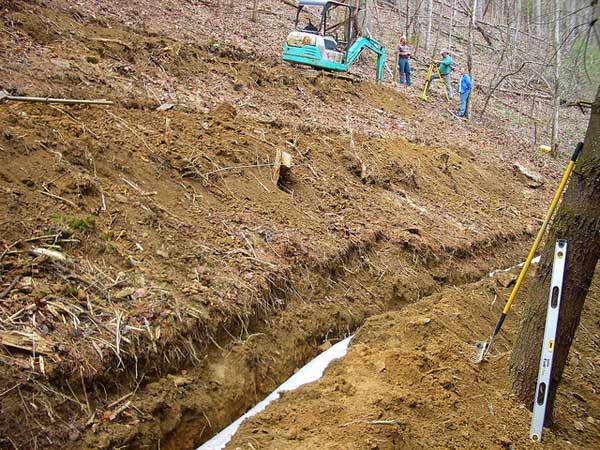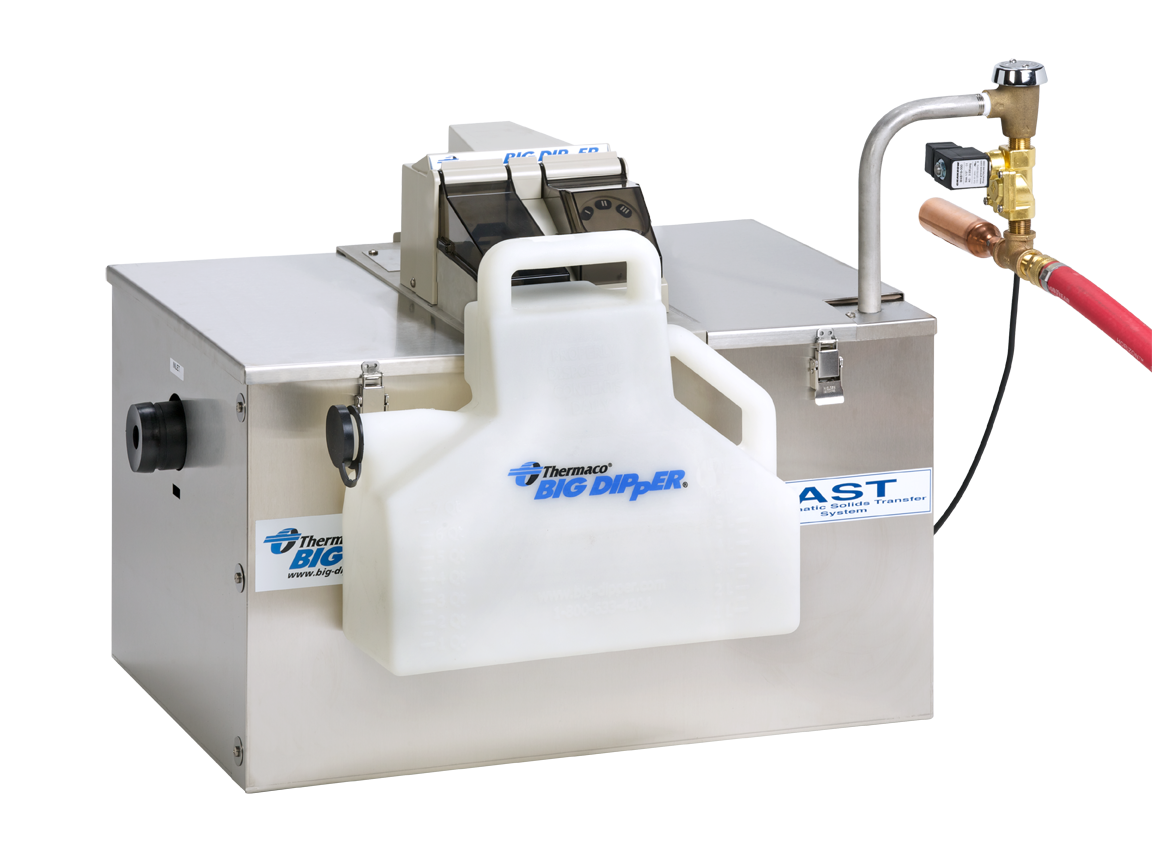Why rural food service establishments should pretreat
- Jul 16, 2015
If you live in a rural area, chances are you use a septic system to treat your wastewater. If that’s the case, you’re probably careful about what goes down the drain and into the tank. You might, for example, pour any used cooking oil or grease into a disposable container and toss it into the garbage can. Sound familiar?
Though that might be standard practice for residences with on-site sewage management, it’s not exactly a feasible option for commercial entities that produce a high volume of grease, such as restaurants and resorts. To maintain an effective sewage treatment system free of grease clogs, pretreatment is vital.
On-site treatment options
Traditionally, businesses and residences that aren’t able to connect to municipal sewage lines rely on septic systems. These systems rely on two, simple components —a septic tank and a soil absorption field — to treat wastewater.
Wastewater first flows into a belowground tank. Heavy solids sink to the bottom (sludge), grease and light solids float to the top (scum), and the middle layer consists of separated wastewater.
When new wastewater flows into the tank, the stagnant water is pushed out of the tank and into a drain field through a series of perforated pipes. The water trickles out of the pipes and into layers of gravel and soil, which scrub and filter the water before it re-enters the groundwater.

Meanwhile, naturally occurring organic bacteria work to break down the solid layers in the septic tank. Though the bacteria do a good job composting the heavier solids that make up the sludge layer, the scum, typically grease and oil, isn’t as easy to process. That’s why septic tanks need to be inspected and pumped every few years.
With installation costs that range between $1 and $4 per gallon, and maintenance costs at about $200 per 2,000 gallons every few years, a septic system is by far the most cost effective onsite treatment option.
Though a traditional septic system is a great option, about two-thirds of the U.S. doesn’t have the geological features necessary to support the system. A drain field that doesn’t function properly, for example, could mean that dangerous pollutants enter the groundwater.
For this reason, there are several alternative onsite treatment options available. These systems either use alternative soil treatment and disposal systems, additional treatment devices, pretreatment tools (like grease traps), or a combination of the above.
Mounds, ATUs and sand
A common alternative onsite treatment technology that’s a good example of combining different treatment methods is the mound system.
These systems perform well in areas with high water tables or shallow bedrocks. In mound systems, wastewater is first pumped into a septic tank for treatment. As in a traditional septic tank, bacteria works to break down the solid waste.
The liquid flows out of the tank by gravity, but, instead of flowing into a drain field, it flows into the pump, or dosing, chamber. When the effluent rises to a certain level, an electric pump disperses a set amount of water out of the chamber and into an above-ground drain field, called a mound.
A network of perforated pipes snakes through the mound and releases effluent through levels of gravel and sand. By the time the water reaches natural soil, it’s been scrubbed of pollutants.
Aerobic Treatment Units (ATU) are another good example of alternative onsite sewage treatment systems. The ATU is similar to a septic system in that wastewater enters a compartment where solids settle and are broken down by bacteria. Unlike the standard septic system, though, a motor pumps air into the compartment and mixes the wastewater. The air encourages the bacteria to further break down the waste. The treated effluent then is dispersed through a soil absorption field.
An additional example of onsite sewage treatment systems that use alternative treatment devices is the sand filter system. Just like most alternative technologies, wastewater is first collected in a septic tank. From there, it flows into a large holding tank that’s filled with sand through a spray system. After it the effluent trickles down to the bottom of this tank, part of the water is carried to a drain field. The other portion is re-circulated through the system again.
Though effective, these alternative methods can be costly. Just the purchase and installation alone for a residential mound system, for example, can run up to $25,000. These systems are also more expensive to maintain. Not only do they need to be pumped every few years, but they also require annual inspections and, in most cases, electricity.
Manage your investment
No matter what system suits your food service establishment best, you’re still looking at a sizeable investment. Doesn’t it make sense to manage that investment wisely?
A big part of managing the overall expense is simply watching what goes down the drain. According to the EPA, the introduction of solids, oil and grease into commercial septic tank systems is the most serious operational hazard encountered.
Grease not only presents a problem to the lines that run from the kitchen to the septic tank, but downstream as well. Oils and grease can easily clog the perforated pipes that lead to a drain field in traditional systems, and all the pipes in between, and also render alternative technologies, like sand filters, utterly useless. No matter the location of the clog or the type of the onsite system, FOGs can wreck serious havoc.
Depending on your area, you might already be required to install a pretreatment technology, such as a large grease trap or a point source interceptor. Even if you’re not, it’s still a good idea.
Imagine, for a moment, that you were the operator of a secluded resort that used a septic system. It’s early July, the resort is packed, and you’re serving hundreds of diners at each meal. Now imagine that your kitchen staff hadn’t been properly trained on how to treat FOGs so they have been washing grease right down the kitchen drain.
What happens if, during one of your meal times, your system backs up due to the inundation of grease? In the best-case scenario, you have to empty your dining room, and likely your resort, while repairs are made. The worst-case scenario leaves you with an empty resort, a septic tank that has caved in on itself and a drain field that needs to be dug up so pipes can be replaced.
Pretreatment sounds pretty good now, doesn’t it?
Pretreatment options for septic systems
If no pretreatment regulations are in place to dictate your pretreatment method, you have a couple of different choices. One option would be to install a point source interceptor designed for heavy flows, like Thermaco’s Big Dipper®. Not only is the Big Dipper® easy to install, but some models can treat up to 50 gallons per minute, making it an ideal solution for FSEs with heavy flows. To make life easier for your kitchen staff, it also automatically separates FOGs into a manually emptied container.

Another viable option would be to install a large capacity grease interceptor, like Thermaco’s Trapzilla. Though this might require some re-plumbing for existing food service establishments, Trapzilla captures upwards of 90 percent of its total volume in grease — up to about 630 pounds of FOGs. Trapzilla systems are typically pumped out on a regular scheduled and the grease disposed of in landfills.
Implementing either of these options would not only save you from costly, unexpected backups, but would also lessen the burden on your treatment system and decrease the frequency of pump truck visits to empty the septic tank.
The EPA recommends that effluent oil and grease concentration be reduced to 30 mg/L before it’s introduced to the soil. By following that recommendation through instilling proper pretreatment and treatment programs, you’ll keep the groundwater free of unnecessary pollutants. And you’ll keep your commercial kitchen running smoothly.
Creative Commons photo courtesy of Soil Science at N.C. State.






